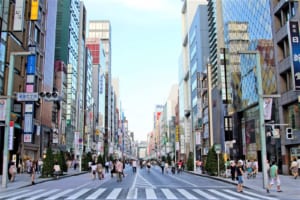Michelin Star Restaurants in Ginza: Tokyo’s Ultimate Gourmet Destination
Michelin Dining in Ginza: Where to Eat, How to Book, and What to Expect
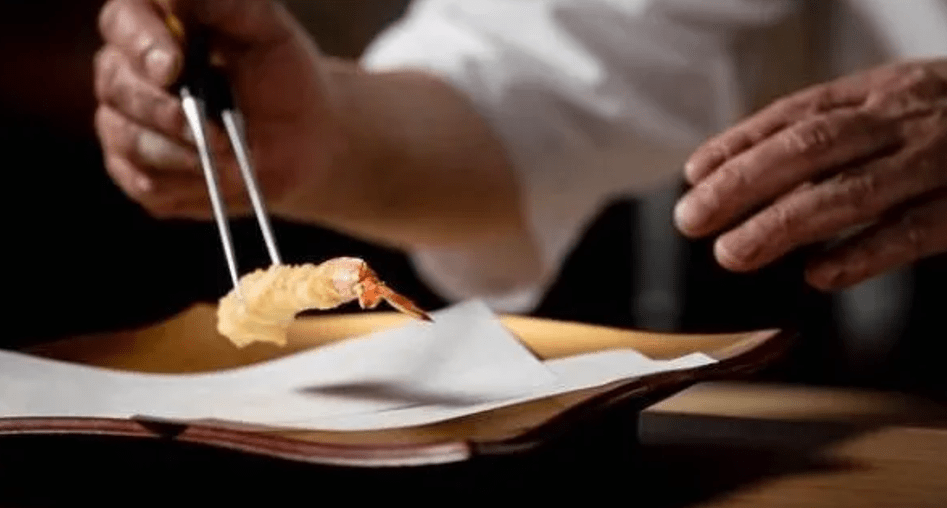
Ginza has long been synonymous with luxury, where high fashion meets fine dining. But beyond its glittering storefronts and stylish avenues lies a culinary universe that has earned global acclaim.
With more Michelin-starred restaurants per square kilometer than almost anywhere else in Japan, Ginza is a haven for discerning gourmets, offering a diverse range of culinary experiences, from world-class sushi to refined French cuisine. This guide explores what makes Ginza so special and provides everything you need to know to enjoy its Michelin-starred delights.
Here’s a list of the best Michelin-starred restaurants in Ginza, according to TakeMe!
*Please note that this article contains affiliate links.
What Makes a Michelin-Starred Restaurant Special in Ginza?
While Michelin stars are awarded based on consistency, quality of ingredients, culinary techniques, and the personality of the chef expressed in the cuisine, Ginza’s restaurants elevate this to another level. Here’s why Ginza stands out:
- Ingredient Excellence: Restaurants in Ginza source seasonal, often rare ingredients—such as Hokkaido uni, wagyu beef, or Edo-style seafood—to deliver a dining experience rooted in perfection.
- Chef-Driven Philosophy: Many Ginza chefs are masters of omakase and kaiseki, blending decades of training with deep respect for culinary tradition.
- Atmosphere and Precision: The ambiance in Ginza’s Michelin venues often complements the cuisine—whether a serene sushi counter or an intimate French salon—offering a seamless, sensory experience.
Top Michelin Star Restaurants in Ginza curated by TakeMe
This curated selection of Michelin-awarded and Michelin-affiliated restaurants was carefully chosen in collaboration with TakeMe, a trusted platform for discovering and booking premier dining experiences across Japan.
Whether you’re craving perfectly crisp tempura, artful kaiseki, or masterful sushi, these Ginza establishments promise exceptional quality, presentation, and service.
▶ For more information about TakeMe, check out our article on “Book Japan’s Top-Rated Restaurants Easily with TakeMe“.
Tempura Restaurants
1. Ginza Yokota(銀座 よこ田)
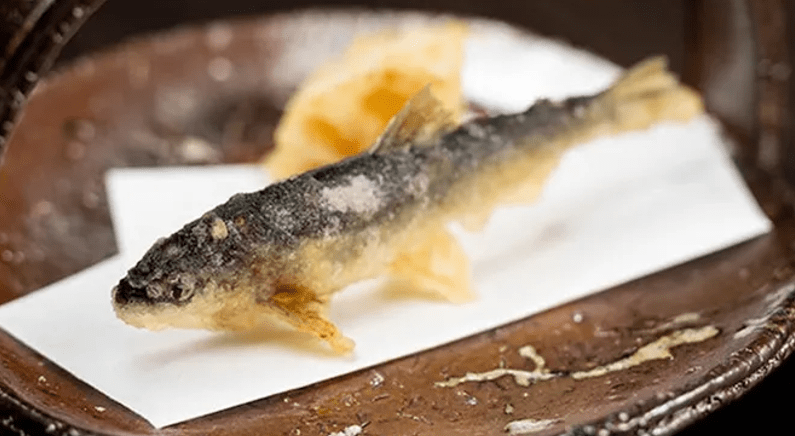
Michelin Status: Affiliated with Michelin-starred Azabu Yokota
Average Price: 56,316 yen
Best for: Business lunches, refined midday indulgence, solo luxury
Highlight:
A sibling to the renowned Azabu Yokota, Ginza Yokota brings together two Japanese culinary art forms: tempura and sushi. Guests can enjoy exquisitely balanced courses that combine the delicate crunch of perfectly fried tempura with the seasonality and finesse of omakase-style sushi.
Signature ingredients such as Kuruma ebi (prawns), kinmedai (golden eye snapper), and silky tea egg custard are carefully prepared and presented in a quiet, elegant setting. For those seeking a luxurious lunchtime experience in Ginza, Yokota is a top-tier option.
▶ Make a reservation at Ginza Yokota
 Access Access |
5 minute walk from Ginza Station (Tokyo Metro) |
|---|---|
 Address Address |
〒104-0061 Tokyo, Chuo City, Ginza, 5-chome−5−11 |
 Business Hours Business Hours |
Lunch 11:30AM - 15:00PM (L.O. 14:00PM) / Dinner 17:00PM - 23:00PM (L.O. 22:00PM) |
 Official Website Official Website |
https://yokota-g.com/shop/ginza/ |
2. Tempura Azabu Yokota Ginza Annex(天冨良 麻布よこ田 銀座別邸)
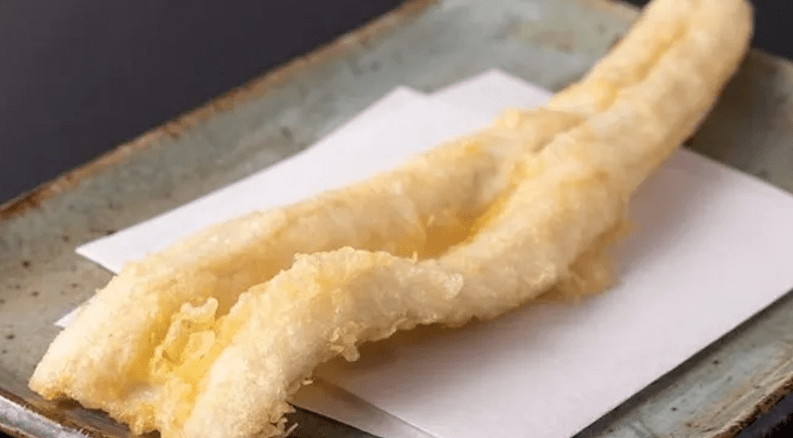
Michelin Status: Affiliated with Michelin-starred Azabu Yokota
Average Price: 23,826 yen
Best for: Intimate dining, food-focused experiences, special occasions
Highlight:
Known for its refined interpretation of tempura, this elegant annex of Azabu Yokota offers guests a serene retreat in the heart of Ginza. The chef’s meticulous control of oil temperature and timing brings out the natural sweetness and texture of each seasonal ingredient—whether it’s perfectly crisp lotus root, rich anago (sea eel), or a delicate tempura roll topped with caviar and ikura.
From its signature lunch sets to the indulgent “Goku” kaiseki dinner course, every bite reflects an elevated mastery of Japanese culinary technique.
▶ Make a reservation at Tempura Azabu Yokota Ginza Annex
 Access Access |
8 minute walk from Ginza Station (Tokyo Metro) |
|---|---|
 Address Address |
6-chome-4-12 Ginza, Chuo City, Tokyo 104-0061 |
 Business Hours Business Hours |
Lunch 11:30AM - 15:00PM (L.O. 13:30PM) / Dinner 17:00PM - 23:00PM (L.O. 21:00PM) |
 Official Website Official Website |
https://yokota-g.com/shop/ginza-bettei/ |
Kaiseki Restaurants
3. GINZA IBUKI(ぎんざ 一二岐)
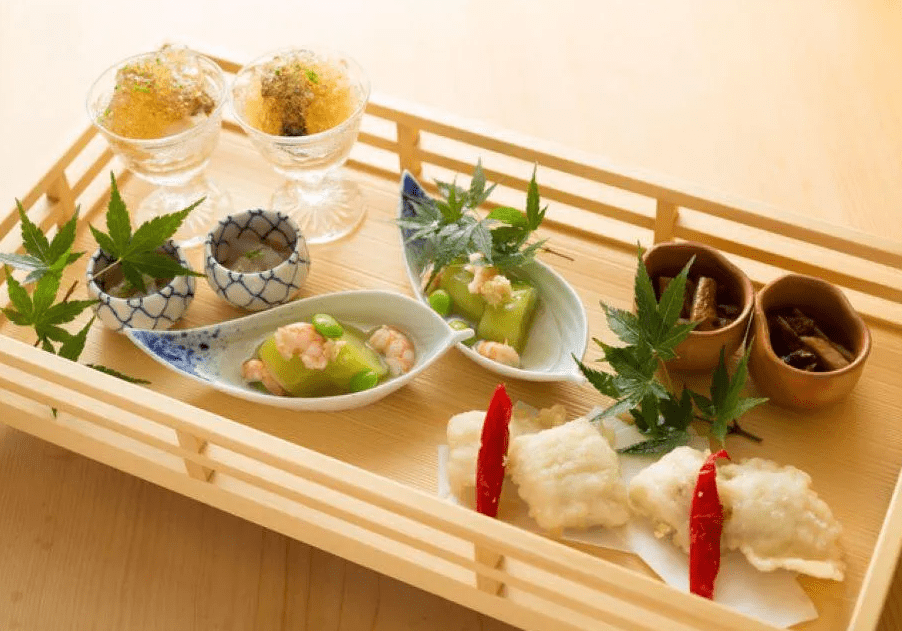
Michelin Status: Former one-Michelin-starred
Average Price: 32,091 yen
Best for: Seasonal tasting menus, solo or small-group culinary journeys
Highlight:
Rooted in the philosophy of “ichi-go ichi-e” (a once-in-a-lifetime encounter), GINZA IBUKI presents modern kaiseki with a touch of creative flair. Each course celebrates the natural flavors of ingredients sourced daily from across Japan.
Whether it’s a delicate soup featuring seasonal vegetables or a carefully grilled fish glazed with yuzu miso, every dish is plated with artistic intention and served with warm hospitality.
▶ Make a reservation at GINZA IBUKI
 Access Access |
4 minute walk from Shintomicho Station (Tokyo Metro) |
|---|---|
 Address Address |
〒104-0061 Tokyo, Chuo City, Ginza, 2-chome−14−6 |
 Business Hours Business Hours |
Lunch(Fri, Sat) 11:30AM - 14:30PM (L.O. 12:30PM) / Dinner 18:00PM - 22:00PM (L.O. 19:30PM) |
 Closed Closed |
Monday |
 Official Website Official Website |
https://www.ginza-ibuki.com/ |
4. GINZA YOSHIZAWA(銀座 よし澤)
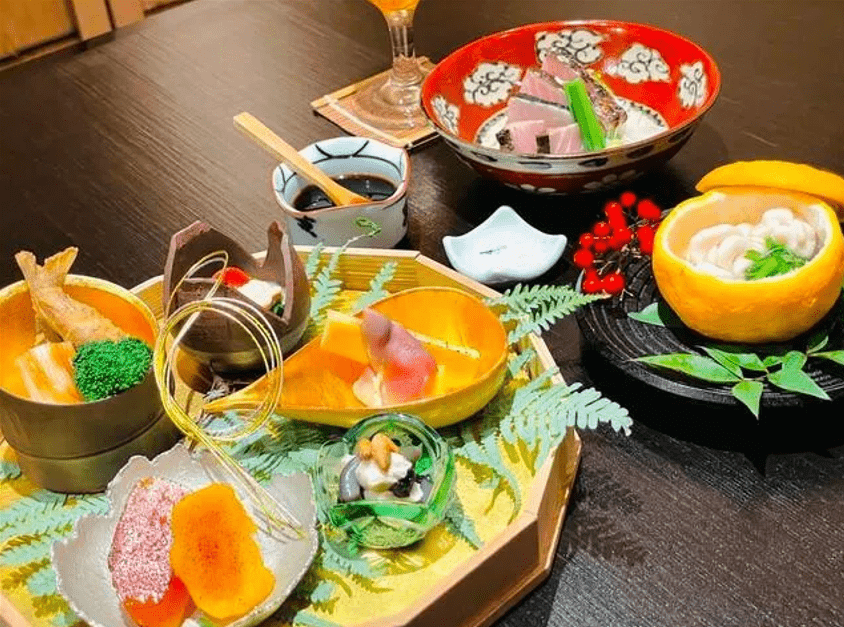
Michelin Status: Former one-Michelin-starred
Average Price: 41,212 yen
Best for: Elegant celebrations, refined Japanese omotenashi
Highlight:
Led by a chef who trained at some of Japan’s most prestigious kitchens, GINZA YOSHIZAWA is a sanctuary for lovers of traditional Japanese cuisine. The experience here is defined by subtle elegance—from its private counter seating to the graceful flow of seasonal dishes like charcoal-grilled fish, silky chawanmushi, and clear soup garnished with hand-carved vegetables.
Every detail, from the tableware to the ambiance, reflects a deep commitment to harmony and hospitality.
▶ Make a reservation at GINZA YOSHIZAWA
 Access Access |
2 minute walk from Ginza-itchome Station (Tokyo Metro) |
|---|---|
 Address Address |
1-chome-13-8 Ginza, Chuo City, Tokyo 104-0061 |
 Business Hours Business Hours |
Mondays 18:00PM - 21:00PM (L.O. 19:30PM) / Tue~Sat Lunch 11:30AM - 14:30PM (L.O. 12:30PM) / Tue~Sat Dinner 18:00PM - 22:00PM (L.O. 19:30PM) |
 Closed Closed |
Sundays |
 Official Website Official Website |
https://www.yoshizawa-ginza.com/ |
Sushi Restaurants
5. Sushi Yuu(鮨 由う)
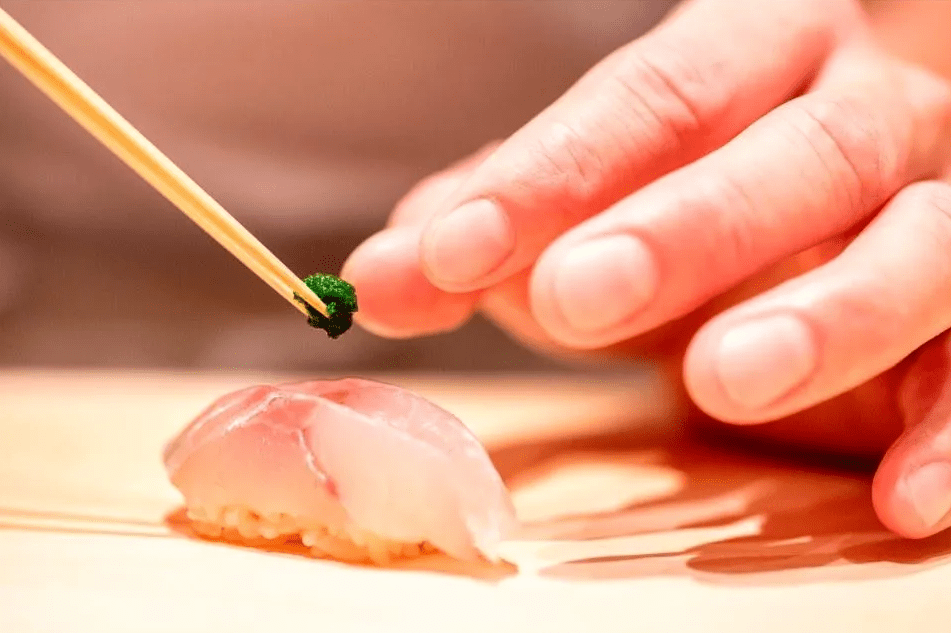
Michelin Status: Former one Michelin-starred (2018–2021)
Average Price: 42,508 yen
Best for: Sushi enthusiasts, intimate counter experiences, culinary theater
Highlight:
Sushi Yuu offers an engaging and intimate omakase experience, guided by Chef Jun Ozaki. Known for his dynamic and interactive approach, Chef Ozaki transforms each meal into a memorable performance.
The omakase course typically includes a variety of dishes such as appetizers, temaki, nigiri, and cooked items. Signature pieces, such as the “Pudding Roll” and “Minato-ku Roll,” showcase the chef’s creativity and dedication to evolving traditional sushi culture.
The restaurant’s ambiance, featuring natural materials such as wood and stone, provides a serene backdrop for this culinary experience.
▶ Make a reservation at Sushi Yuu
 Access Access |
3 minute walk from Ginza-itchome Station (Tokyo Metro) |
|---|---|
 Address Address |
〒104-0061 Tokyo, Chuo City, Ginza, 1-chome−14−6 |
 Business Hours Business Hours |
Lunch 17:00PM - 19:30PM (L.O. 17:30PM) / Dinner 20:00PM - 22:00PM (L.O. 20:30PM) |
 Closed Closed |
Tuesdays, Wednesdays |
6. Ginza Sushiko Honten(銀座寿司幸本店)

Michelin Status: Former one-Michelin-starred
Average Price: 40,071 yen
Best for: Sushi traditionalists, cultural deep-dives, intimate omakase experiences
Highlight:
Established in 1885, Ginza Sushiko Honten is one of Tokyo’s oldest sushi establishments, offering a serene and intimate setting with just 10 counter seats. Guests can enjoy a traditional Edomae-style omakase experience, featuring seasonal selections such as various cuts of tuna, sea urchin, and abalone.
The chefs’ meticulous preparation and the restaurant’s rich history provide a dining experience that is both authentic and memorable.
▶ Make a reservation at Ginza Sushiko Honten
 Access Access |
8 minute walk from Ginza Station (Tokyo Metro) |
|---|---|
 Address Address |
6-chome-3-8 Ginza, Chuo City, Tokyo 104-0061 |
 Business Hours Business Hours |
Lunch 12:00PM - 14:00PM (L.O. 13:00PM) / Dinner 17:00PM - 22:00PM (L.O. 20:30PM) |
Tonkatsu Restaurant
7. Yabaton Tokyo Ginza(矢場とん 東京銀座店)
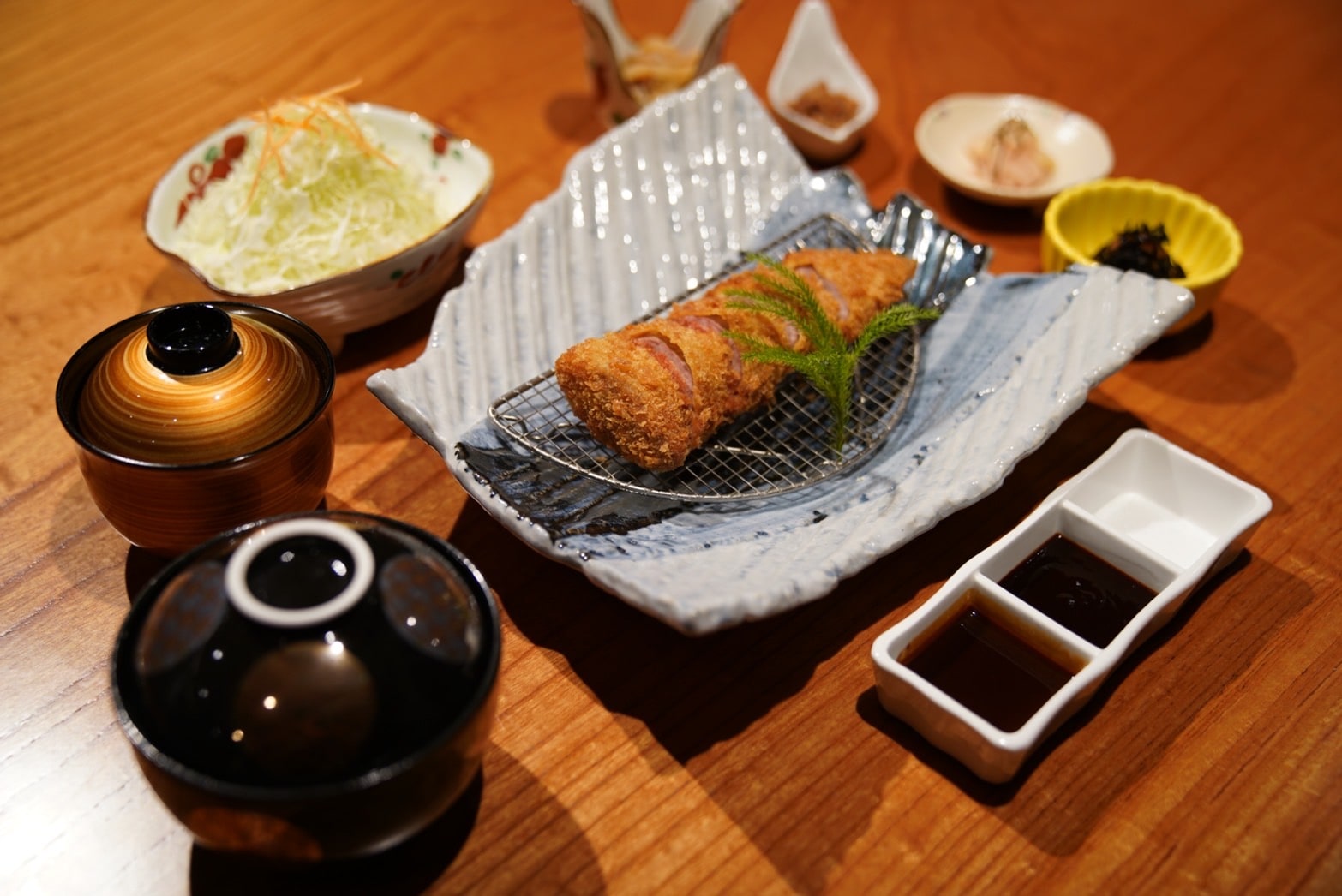
Michelin Status: Former Michelin-starred
Average Price: 4,427 yen
Best for: Comfort food lovers, casual dining, family-friendly meals
Highlight:
A beloved name in Nagoya-style cuisine, Yabaton is renowned for its hearty miso katsu—a crispy pork cutlet slathered in a rich, sweet-savory red miso sauce. The Ginza branch brings this soul-satisfying specialty to Tokyo with generous portions, nostalgic flavors, and an approachable atmosphere.
It’s an excellent spot for travelers seeking authentic regional food without the formality of fine dining. Bonus: The playful pig mascot and retro decor create a fun, laid-back experience in the heart of the city.
▶ Make a reservation at Yabaton Tokyo Ginza
 Access Access |
2 minute walk from Ginza-itchome Station (Tokyo Metro) |
|---|---|
 Address Address |
〒104-0061 Tokyo, Chuo City, Ginza, 2-chome−11−2 |
 Business Hours Business Hours |
11:00AM - 22:00PM (L.O. 21:00PM) |
 Closed Closed |
Mondays |
 Official Website Official Website |
https://www.yabaton.com/ |
How to Secure a Reservation at Ginza’s Michelin Restaurants
Booking a table at one of Ginza’s Michelin-starred establishments can be a challenge, especially for first-time visitors or those unfamiliar with Japanese reservation systems. Here are your best options:
Book Through the Restaurant’s Official Website
Some Michelin restaurants accept reservations directly through their official sites. This is often the most reliable method, especially for high-end venues that prefer personal communication.
Use a Trusted Reservation Platform
Several reputable services specialize in high-end dining reservations. One of the most user-friendly options is TakeMe. It offers multilingual support, curated listings, and often includes exclusive access to restaurants that are otherwise fully booked.
*Tip: Book at least 2–4 weeks in advance for dinner slots. For lunch, you might find availability closer to the date, especially on weekdays.
Insider Tips for First-Time Michelin Dining in Japan
Dining at a Michelin-starred restaurant in Japan is a culturally rich experience. Here are a few etiquette and practical tips to enhance your visit:
- Be Punctual: Arriving even a few minutes late can be considered disrespectful. Japanese restaurants operate with precision timing.
- Dress Code Matters: While not all restaurants enforce strict attire, smart-casual to formal wear is appreciated.
- Omakase Etiquette: If you’re experiencing an omakase (chef’s choice) meal, trust the chef’s flow. Avoid requesting substitutions unless for allergies.
- No Tipping: Tipping is not customary in Japan and may be perceived as awkward. Instead, a polite bow and a word of thanks (“gochisousama deshita”) are appreciated.
- Ask Before You Snap: Not all restaurants allow photography. Always check first, and avoid using flash if permitted.
Whether you’re a seasoned foodie or a curious traveler, Ginza offers a gateway into some of Japan’s most prestigious dining experiences. With the help of trusted platforms like TakeMe, navigating the world of Michelin-starred restaurants becomes not just possible but seamless and enriching. From once-in-a-lifetime omakase courses to French-Japanese fusion, Ginza is a destination where culinary dreams come true.
For more information about Ginza area, please check out listed articles, too!
Written by
Born and raised in Costa Rica, I started living in Tokyo from college. I love traveling within Japan & around the world. Since I wasn’t born in Japan, I know the cultural impact that you can get when visiting Japan for the first time and what you might be worried about before your trip. And I’ve lived long enough to somewhat understand the nuances of the Japanese culture that make this country such an attractive place to visit. Hopefully I can provide to you both the information you’re looking for and the information you didn’t know you needed to know.





